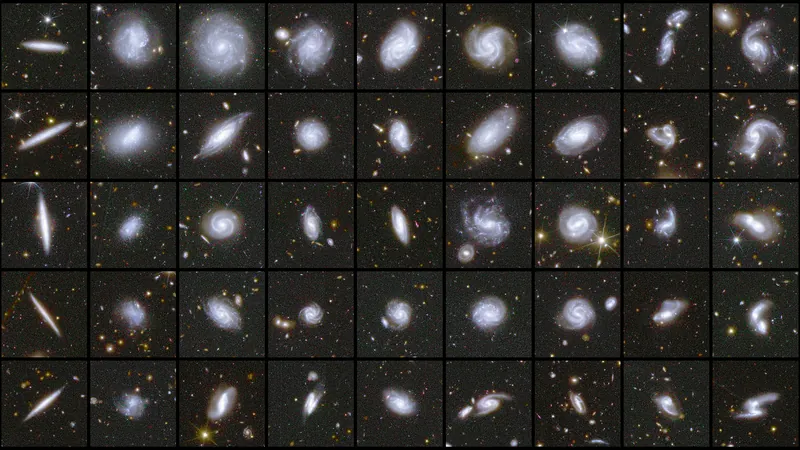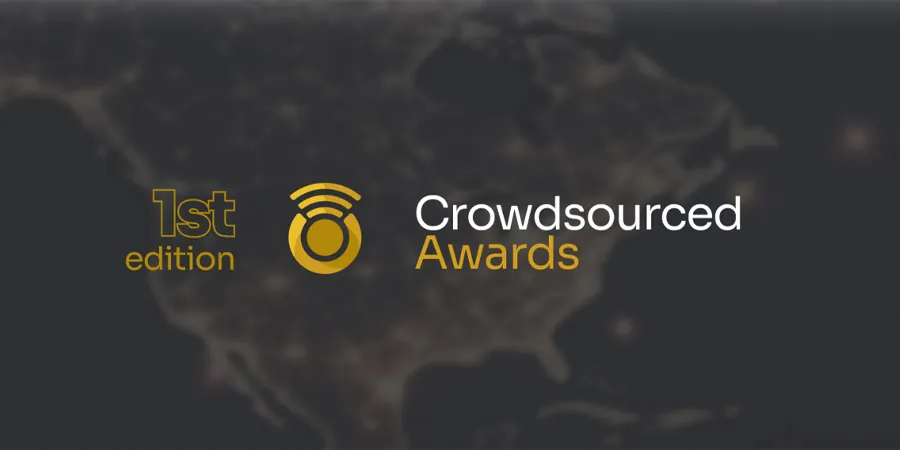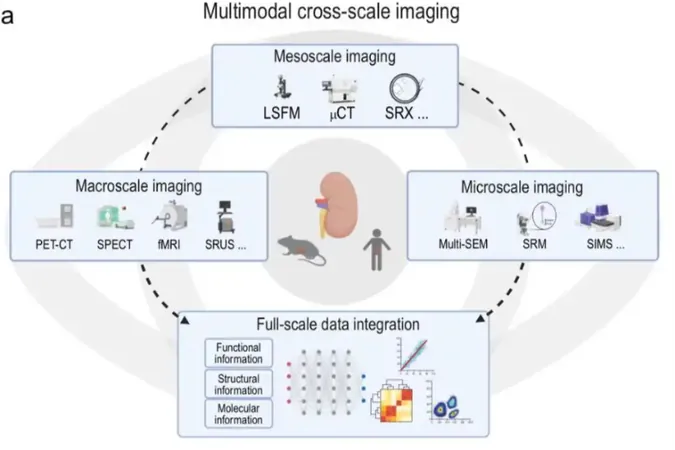
Euclid Unveils Stunning Cosmic Mosaic: 26 Million Galaxies Captured!
2025-03-23
Author: Siti
The European Space Agency’s (ESA) groundbreaking Euclid mission has just unveiled its first survey data, revealing an astonishing collection of galaxies, clusters, and deep cosmic fields. This release offers a tantalizing preview of one of the most extensive cosmic maps ever created, providing a window into the intricate structure of our universe.
The latest deep field mosaics spotlight hundreds of thousands of galaxies, showcasing their shapes, brightness, and distribution—all of which culminate in a breathtaking visual representation of the cosmic web. These observations include active galactic nuclei and fleeting celestial events, giving scientists unique insights into the unseen forces that influence our cosmos.
A Galactic Odyssey: 26 Million Galaxies Mapped
In an impressive feat, the Euclid mission has already mapped 63 square degrees of galaxy-filled sky in just one week—equivalent to the area covered by 300 full Moons. This initial scan captured more than 26 million galaxies, including quasars located an incredible 10.5 billion light-years away. The ambitious plan aims for Euclid to thoroughly survey each of the three deep regions between 30 to 52 times before 2030, ultimately creating a comprehensive sky map that spans one-third of the celestial sphere, or about 14,000 square degrees.
Each additional observation will enhance this cosmic roadmap, providing a detailed 3D atlas that will help scientists decipher the origins and evolution of galaxies, while shedding light on the enigmatic role of dark matter in shaping these celestial bodies.
Revealing the Cosmic Web
The insights gleaned from these new observations are refining our understanding of the universe’s large-scale structure. The vast filaments of normal and dark matter that stretch across space serve as the scaffolding for galaxy formation and evolution. Euclid’s advanced visible and near-infrared instruments allow for precise measurements of both the shapes and distances of these galaxies, sparking excitement among scientists about the groundbreaking discoveries that await.
ESA scientists express optimism that the data collected will enhance our grasp of dark matter and dark energy—two invisible constituents that collectively account for 95% of the universe.
Harnessing Cutting-Edge Technology in Galactic Classification
The immense dataset generated by Euclid requires innovative approaches for analysis. The mission reports that it returns approximately 100 GB of data daily, necessitating the use of both artificial intelligence and citizen science to process this flood of information. Already, a new catalogue featuring over 380,000 galaxies has been established, classified by unique features and shapes through the revolutionary Zoobot algorithm—successfully trained by nearly 10,000 volunteers.
This initial catalogue represents a mere fraction (0.4%) of what Euclid is projected to deliver, indicating a wealth of information still to come.
Gravitational Lensing: A Window to the Unseen Universe
One particularly exciting aspect of Euclid's mission is its exploration of gravitational lensing—a phenomenon where light from distant galaxies is bent by massive objects, such as galaxy clusters, altering our perception of the universe. This bending effect is not only a cosmic spectacle but also a crucial tool for uncovering dark matter.
Euclid has already identified 500 potential strong gravitational lenses, many of which are previously unobserved, with expectations set to discover around 100,000 such lenses by the mission's completion—a hundredfold increase in our current knowledge.
By combining the power of advanced technology, citizen scientists, and expert analysis, the Euclid mission is set to revolutionize how we study dark matter and understand the formation of galaxies.
What Lies Ahead for Euclid’s Journey
By March 2025, the Euclid mission will have scanned approximately 2,000 square degrees, or 14% of its total planned survey area—a promising start to an ambitious project. The mission will release its first full set of cosmology data in October 2026, which will include extensive observations of three designated deep fields, offering even clearer views of distant regions of the universe.
Launched in July 2023, Euclid entered regular scientific operations in February 2024. Built in collaboration with NASA and prestigious companies like Thales Alenia Space and Airbus, the mission is supported by the Euclid Consortium, a global collaboration of over 2,000 scientists from 15 countries.
Excited to explore the deep field images for yourself? Visit the ESASky platform! The unveiling of these images is only the beginning; the Euclid mission promises to continuously unravel the hidden mysteries of the cosmos. The future of astronomical discovery looks incredibly bright!




 Brasil (PT)
Brasil (PT)
 Canada (EN)
Canada (EN)
 Chile (ES)
Chile (ES)
 Česko (CS)
Česko (CS)
 대한민국 (KO)
대한민국 (KO)
 España (ES)
España (ES)
 France (FR)
France (FR)
 Hong Kong (EN)
Hong Kong (EN)
 Italia (IT)
Italia (IT)
 日本 (JA)
日本 (JA)
 Magyarország (HU)
Magyarország (HU)
 Norge (NO)
Norge (NO)
 Polska (PL)
Polska (PL)
 Schweiz (DE)
Schweiz (DE)
 Singapore (EN)
Singapore (EN)
 Sverige (SV)
Sverige (SV)
 Suomi (FI)
Suomi (FI)
 Türkiye (TR)
Türkiye (TR)
 الإمارات العربية المتحدة (AR)
الإمارات العربية المتحدة (AR)